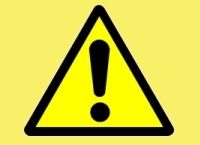 What is a Risk Assessment?
What is a Risk Assessment?
A risk assessment is an evaluation of risks and consequences involved in carrying out a certain task and what controls you will put in place to minimize the risks.
You carry out a risk assessment every time you cross the road, pull out at a junction or set up your pole or ladders.
Obviously to cross the road you don’t need to write a risk assessment! The situation and hence the risk assessment is dynamic and changes continuously. However, the same principle of evaluating the risks involved and coming to conclusions as to the course of action required provide the basis for creating a risk assessment.
Why Carry Out a Risk Assessment?
Risk assessment is not an option. It is a requirement of the management of health and safety at work regulations 1999. Serious problems can arise if an accident occurs and no risk assessment has been carried out. This is particularly true if you have employees.
Many commercial customers may request that you provide a written risk assessment, but even if they don’t, it’s good commercial practice to provide one. It will enhance the customers esteem for you as a professional and more than that it will protect you from and your business from criminal and civil court action. Obviously the main benefit of working in harmony with the findings of a risk assessment is that you and your employees will be safer at work.
How Do I Carry Out A Risk Assessment?
A risk assessment therefore must be specific to the site involved. It’s no good just copying one already prepared because the risks may be different. Risk assessment boils down to basic common sense. Documenting the findings of a risk assessment need not be overly complicates. The health and safety template kit shown above includes an example risk assessment and forms which make documenting a risk assessment very simple. However, if you wish to create your own, here are some guidelines as what it should include.

There are 5 stages in carrying out a risk assessment.
1. Identify the hazards involved.
The first step in assessing risk is obviously to identify the potential hazards.
Write a list of all the potential hazards that you can think of related to each particular task.
2. Decide who is at risk and how.
Next to each risk on your list, jot down who is at risk and how. eg. is it the person working or is it the general public? Why are they at particular risk?
3. Evaluate the risks and decide on what precautions are necessary.
This is where you need to decide how great the risk is. If the risk is high then something should be done to minimise the risk before work continues. These preventative measures are called controls. What controls are in place to reduce the risk?
To evaluate the risk first ask yourself how likely is it that an accident will occur as a result of the identified risks for each task. Using a system of scoring from 1 – 5 is a common way system of evaluation. The higher the number, the higher the likelihood and therefore the greater the risk. For example:
Likelihood
1 = Remote. (Very unlikely to happen)
2 = Unlikely. (May happen on rare occasions)
3 = Likely. (May happen once a year)
4 = Very likely. (Could occur several times a year)
5 = Certain. (Sure to happen at any time)
Now that we have an idea of how likely an accident is as a result of the risk, we need to determine what kind of consequences would result from the potential accident.
Consequences
1 = Minor Injury
2 = Incapacity to work
3 = Major Injury
4 = Fatality
5 = Multiple fatality
The risk can now be evaluated by using the formula shown below:
Risk Evaluation = Likelihood x Consequences
By evaluating the severity of the risk we can decide what controls, if any need to be put in place to reduce the risk to an acceptable level.
1 – 5 = Very Low. (No further action required)
5 – 10 = Low. (Controls to minimise risk should be monitored)
10 – 15 = Medium (Controls must be put in place to reduce risk)
15 – 20 = High. (Urgent action is required to reduce risk)
20 – 25 = Very High. (Work should cease until the risk has been reduced)
Control measures could involve the following:
Elimination. (eg. risk of fall from height from ladder: Using a water fed pole instead of ladders)
Substitution. (eg. risk of fall from height: Using a MEWP rather than portable ladders)
Reduction. (eg. risk of falling from ladder: Using a ladder stability device)
Isolation (eg. using MEWP in front of a hotel: Isolate area with barriers or tape)
Procedure (eg. trip hazzard from trailing hoses in front of hotel entrance: Use safety signs)
PPE -Personal Protective Equipment (eg. using MEWP at height: Wear a harness in cradle)
Discipline (eg. has adequate training been given?)
4. Record your findings and put them into practise.
Your findings should now be documented and more importantly you will need to act in harmony with the findings of your risk assessment by putting the necessary controls in place.
A risk assessment template showing various common hazards and risks involved with window cleaning thatyou can use to adapt to be site specific is available to download.
5. Review the risk assessment regularly and update it if necessary.
Risk assessments need to be reviewed regularly. Set a date when you need to review it by. When you review the risk assessment look for changes in the working environment that affect the risk assessment. Are there new dangers? Are the ground conditions the same? Update the risk assessment accordingly.
Health and Safety Documents Template Kit
Only £20.00
Download Today
Employers have many responsibilities. These documents make fulfilling them a little easier. Includes Risk Assessment and Method Statement templates and examples as well as various policies.